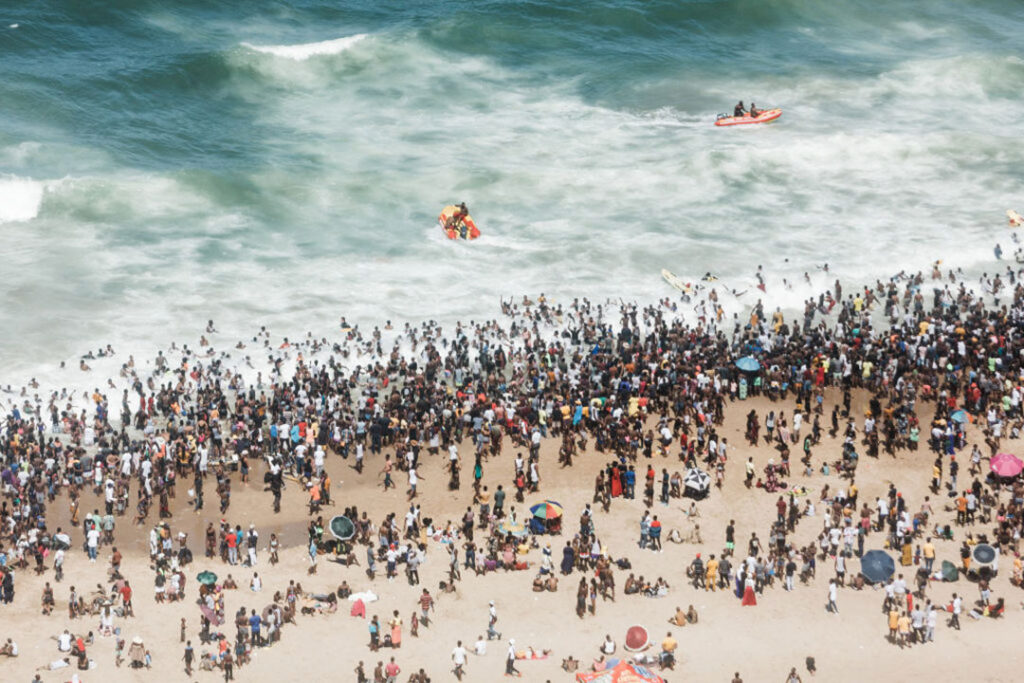ADF STAFF
The recent news that South Africa was lifting COVID-19 restrictions was met with celebrations.
People gathered in restaurants and bars, on beaches and in parks.
Some still wore masks indoors and kept their distance from others, but a sense of normalcy is returning to the continent’s hardest hit country at long last.
Looking over his packed dining room, one Cape Town restaurant owner recalled how financial problems forced him to close in the early days of the pandemic.
“I wish I won’t even hear the name COVID again,” Mfundo Mbeki told Deutsche Welle (DW) news website. “That’s what we are wishing for.”
The dream of reopening is one shared by people across the continent. In South Africa it is becoming reality.
President Cyril Ramaphosa cited falling COVID-19 case numbers in the fourth wave, the most recent of the virus, as he announced plans to end the national state of disaster imposed in March 2020.
“Our approach has been informed throughout by the best available scientific evidence, and we have stood out both for the quality of our scientists and for their involvement in every step of our response,” he said during his February 10 state of the nation address to lawmakers.
“We are now ready to enter a new phase in our management of the pandemic. It is my intention to end the national state of disaster as soon as we have finalized other measures under the National Health Act and other legislation to contain the pandemic.”
At the time of his speech, South Africa had recorded more than 3.6 million cases and nearly 100,000 deaths since the pandemic began.
The highly infectious omicron variant changed everything.
Fareed Abdullah, director of the Office of AIDS and Tuberculosis Research at the South African Medical Research Council, described the omicron experience in Tshwane, where the first case was reported.
“The speed with which the omicron-driven fourth wave rose, peaked and then declined has been staggering,” he posted on Twitter. “Peak in four weeks and precipitous decline in another two. This omicron wave is over in the city of Tshwane. It was a flash flood more than a wave.
“Deaths in the omicron wave were down by 80%, ICU admissions fewer by 75% and length of hospital stay was 50% compared to outcomes and admissions in previous waves [combined].”
By late December 2021, policy decisions were made based on South Africa’s Health Department data that showed most of the population had already been exposed to the virus.
The country repealed its midnight curfew December 31, ahead of New Year’s Eve celebrations. More regulations were rolled back January 31, as the government announced it was at COVID-19 alert level 1, the lowest of five stages.
“Containment strategies are no longer appropriate — mitigation is the only viable strategy,” Health Department Director-General Sandile Buthelezi wrote in a memo to provincial officials in late December, announcing the end of contact tracing.
Among the newest guidelines, there are no longer testing or isolation requirements for anyone who is asymptomatic. Schools have returned to normal without social distancing.
“The rationale for these amendments is informed by the proportion of people with immunity to COVID-19, which has risen substantially, exceeding 60% to 80% in several serological surveys,” the Health Department said in a statement.
As other African countries emerge from the fourth wave of COVID-19, South Africa offers hope for an end to many of the harshest restrictions that have been in place for nearly two years.
Despite the threat of more variants on the horizon, South Africa has returned to some semblance of normalcy, and the rest of the continent can look forward to the same.
But medical experts caution that each country has different circumstances, and different infection and hospitalization rates to consider in determining its ability to reopen.
“That’s why you can’t just say: We expect things to go as they have in South Africa,” Stellenbosch University epidemiologist Dr. Wolfgang Preiser told DW.

